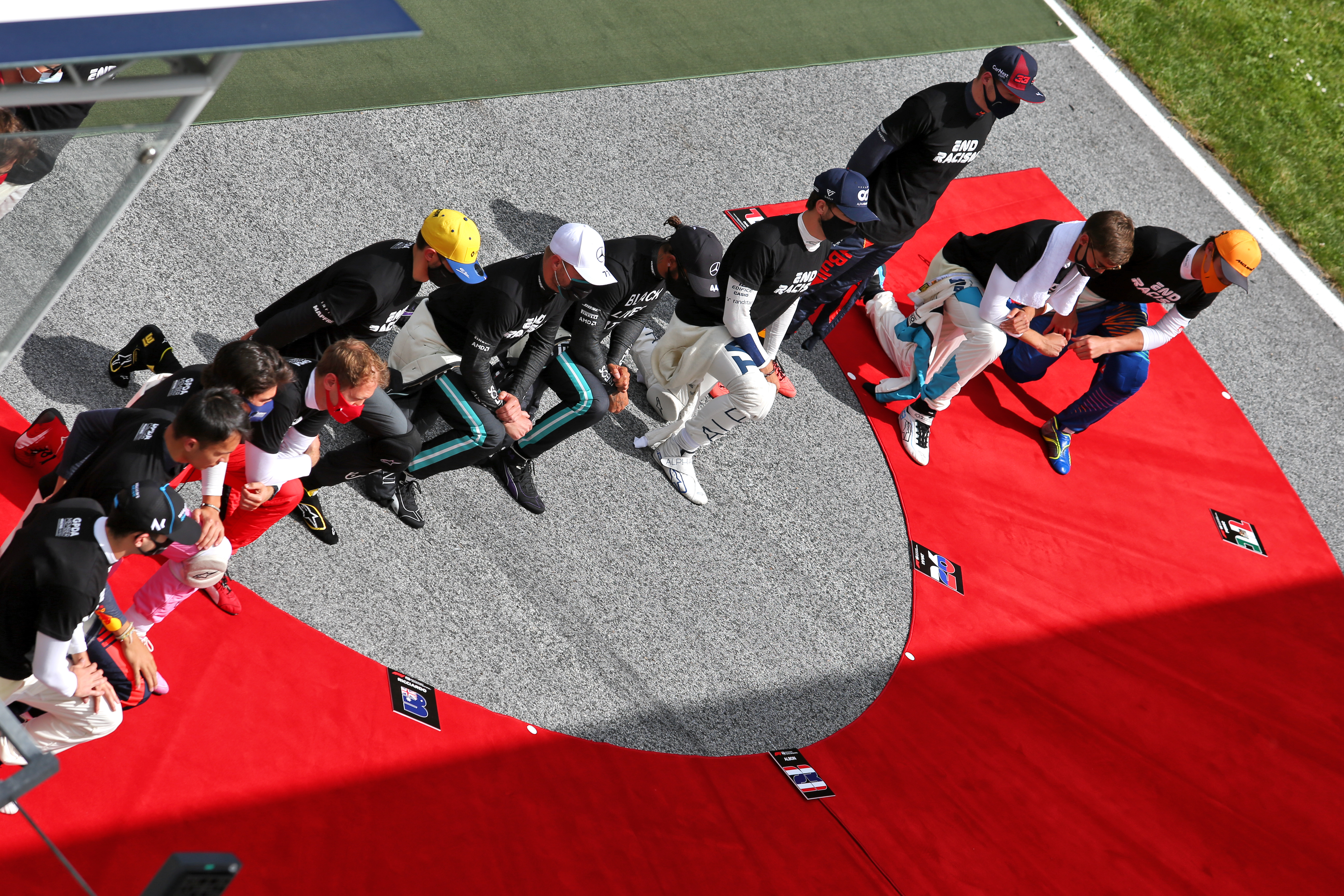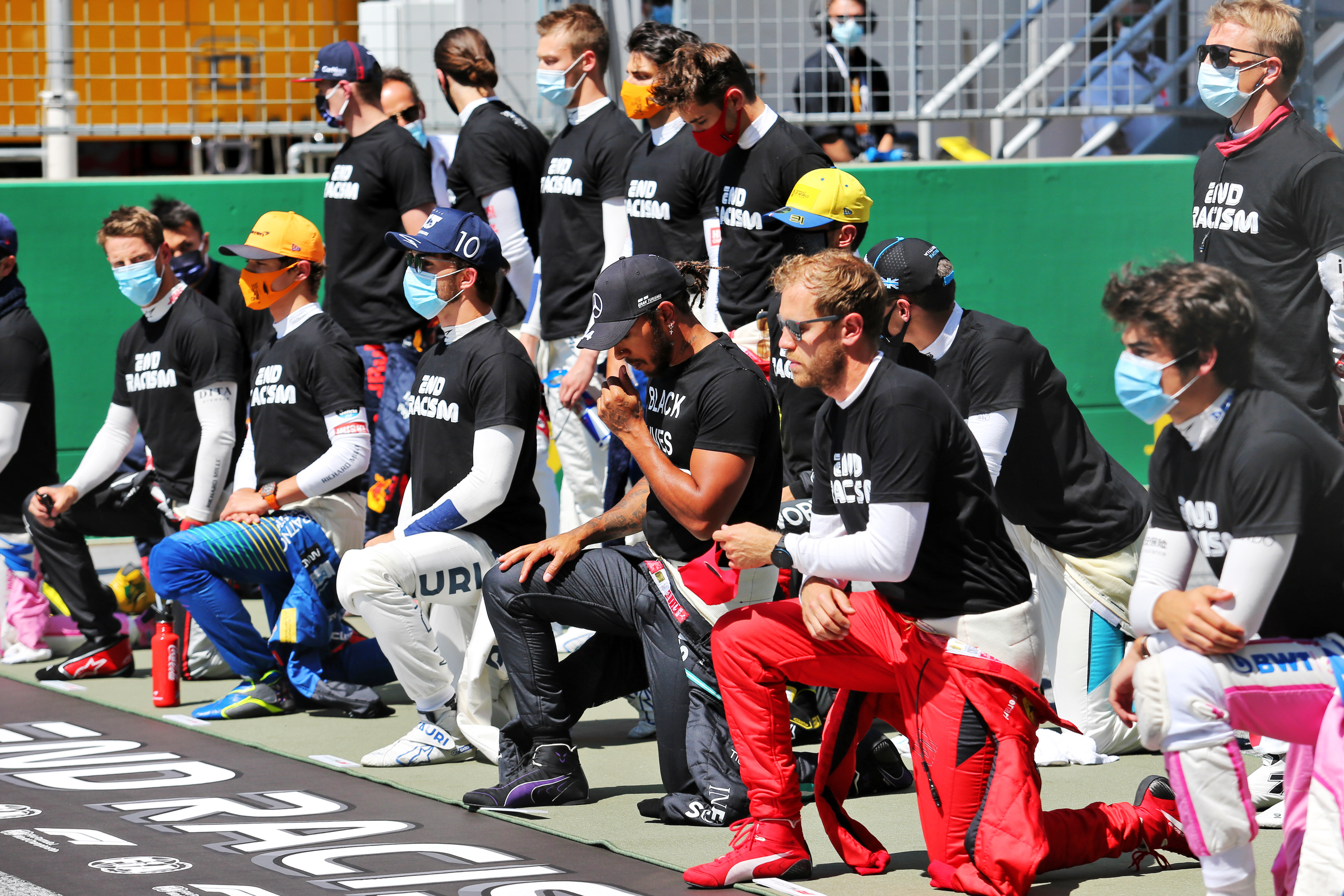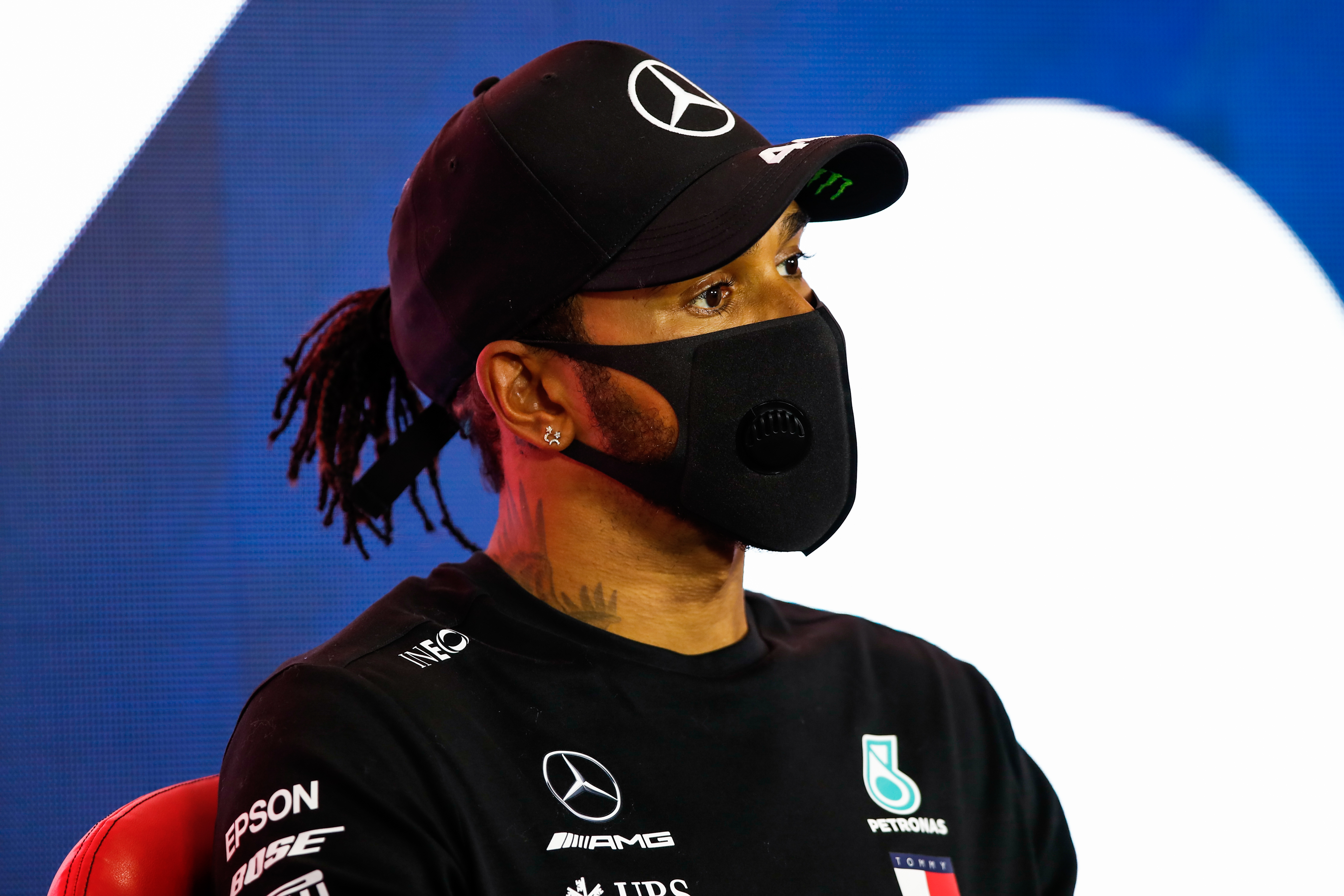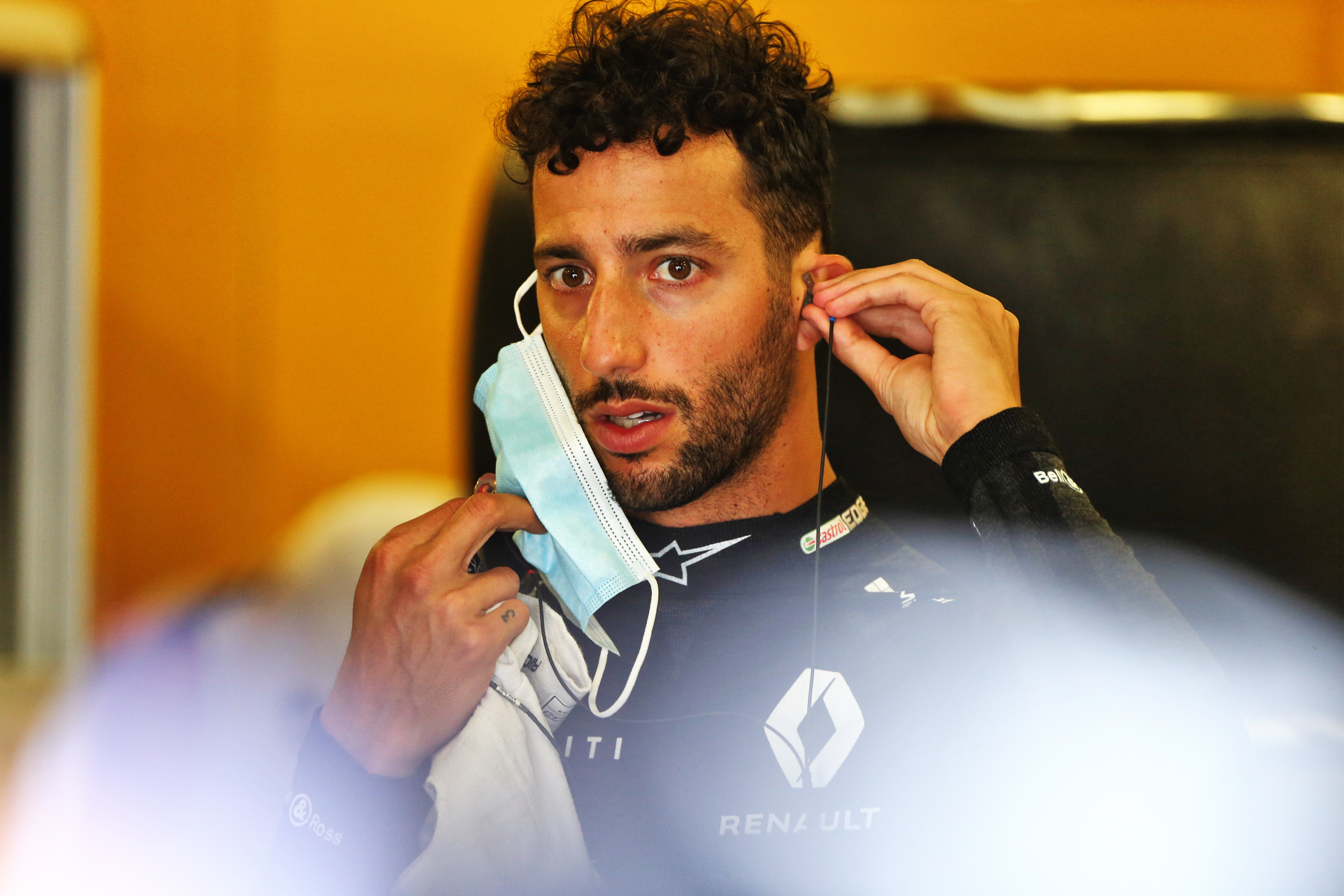Up Next

Lewis Hamilton, Sebastian Vettel and Daniel Ricciardo have 146 Formula 1 victories between them. They can take a share in another at the British Grand Prix, and the race hasn’t even started yet. But that’s kind of the point.
It’ll be around 17 minutes before the formation lap begins at Silverstone when those three drivers, and others like Romain Grosjean, can take satisfaction in a job well done. That’s when, thanks to F1 and the FIA, a prominent display “in recognition of the importance of equality and equal opportunity for all” will be part of the live TV images before the race for around half a minute.
“As long as we are all there together and get a moment which doesn’t feel forced or rushed, I think that’s most important,” Ricciardo had said on Thursday.
“In Budapest, it was a bit of a mess for the timing so they’ve addressed it now and I think we’ll continue to do as we’ve done just with a little bit more ease and not such rush and chaos.”
It would be disingenuous to claim getting F1’s pre-race anti-racism stand back in a prominent position is the greatest victory of the weekend, and in isolation it might not seem like a win at all.
But F1 was heading down a tricky path in a fractured state and this could be a significant milestone in that journey. And as FIA race director Michael Masi wrote at the end of a detailed set of notes: “I hope the above is clear and provides some clarity and reassurance to the drivers.”

Hamilton, Vettel and Ricciardo have spoken – and acted – with passion and respect on the subject of racism. Others have too, including the next generation of drivers like Lando Norris, but this trio in particular has been at the forefront of consistently explaining why it is important and why it must be continued.
“We cannot ignore what’s happening outside of our racing bubble,” says Vettel.
“And I think the fight against racism around the world that has taken off again in the last couple of weeks and months, I think it is completely justified.
“It is an ongoing process and needs all of us – and that’s not just us racing, I think that would be ignorant – all human beings around the planet to stand up and to try and go against racism, inequality, injustice in any form.
“It is right to try and set the right signs to inspire people because in the end I believe that education is probably the only way out of it.
“It is insanity to think that in 2020 with all the knowledge that we have of the past, and all the lessons we’ve learned that there is still something that does exist that should be out of the question.
“But it’s not, so therefore we need to stand up when we have the chance publicly to send a message – or more so even when the camera’s off and we are living our everyday life and setting the right example, and trying to behave in a way that is right.”
That’s what the official anti-racism ‘ceremony’, held at the season-opening Austrian Grand Prix, was all about – a very strong message to a very large audience. But it was made less formal at the next two races and turned into a bit of a rush. It seemed to slip off the agenda and it emerged that other drivers were happy to let that happen.

It’s one thing that all 20 drivers haven’t knelt so far. But as has so often been iterated, that doesn’t matter so long as the 20 are united for the cause.
If some drivers wanted to just drop it and move on, that shatters the illusion of unity. That all 20 seem set to persevere suggests it was more about not understanding the importance of the issue rather than being against it.
To some it will still look odd to see the majority of drivers kneeling and others doing something else. But we’re making baby steps with this issue, which is how Hamilton sees it – progress.
“I spent time speaking to Jean Todt, spent time speaking to Chase Carey and Ross Brawn and had really great conversations with them to understand what they’re planning and what they want to do moving forward, and to make sure they know that we’re on the same team here,” Hamilton says.
“Things like giving us that little bit of extra time at the beginning before the race, so that we can really show how united we are as a sport – because other sports have done a better job at consistently doing that.
“They’ve been really open-minded and I do think that it needs to continue through the year.
“I believe, at the moment, that’s what we’re going to continue to do. I think there’s been some pushback, from some teams maybe.
“But again, it’s a work in progress to get us all together. And I think it’s going in the right direction.”

Different people have different positions on this subject. Not in the sense that anyone morally decent thinks racism isn’t bad, or shouldn’t be ended. But it’s a fact that not everybody is on the same page with how prominent this issue needs to be or what part F1 can play in making a difference.
That’s what has caused division among the drivers and projects an image that the ‘unity’ everybody speaks of might not actually be there.
“After the first race it was then discussed between us drivers, what do we do moving forward,” says Ricciardo.
“Some were in the mindset of ‘OK, well I’ve done it, so why do we need to keep doing it? I showed the support and that’s it’.
“But I think that’s just a bit of education, and I’m not gonna sit here and say I know more than everyone else about the topic because I don’t – but I feel that it was then time to open up the conversation and say well, these are the reasons why doing it once is not really doing enough.”
It’d be great to see all 20 take the knee before the start but that won’t happen and it probably won’t happen all season long. But whatever those drivers choose to do instead, they should be willing to do in front of the cameras for the remainder of 2020.
“It’s not like if someone passes and you wear a black armband, that makes sense, you acknowledge it on that moment and it’s not like you have to do it for the next year or something,” says Ricciardo.
“But this is a cause that is ongoing, and it’s still very fresh for a lot of people, a lot of parts of the world and I think we need to continue honing in on it, and making people aware of it.
“That’s why just doing it once is not enough. If you just do it once, how much do you really mean it?
“I think you have to continue showing your support and your willingness to do something and make a change.”

At this point the knee issue is a distraction from scrutinising whether F1 is really unified on this matter and serious about it. What’s been put in place for the British GP suggests that is the case, as it was in Austria.
The rest is an issue for the drivers to discuss amongst themselves.
Given taking the knee originated as a statement from NFL player Colin Kaepernick against police brutality and racial profiling in the United States, is it a political statement? Or has it transcended its origins and become a gesture of solidarity? Is it really a very sensitive and divisive gesture in some cultures, as has been protested?
And what of the ongoing co-opting of the Black Lives Matter message, originally and ostensibly a simple, powerful statement demanding people recognise the needless killing of black Americans?
As Hamilton has discovered, the association that message now has with controversial political organisations has split supporters of the same cause into factions.
“I’m clearly for more inclusion and ending racism – this whole messaging and movement in my mind is great, and I think it’s only good that we’re putting awareness on this and spreading the word,” says Haas driver Kevin Magnussen. “And I want to participate in that for sure.
“But I don’t want to become political and it’s difficult for me to know how my actions are being perceived by others. I really just don’t want to go into politics and I don’t want to be seen to support groups or organisations that I can’t stand with.”
His team-mate Grosjean says: “Kevin mentioned really a good point that some of the guys have been afraid of being linked to any political movement.
“I don’t think it’s happening but maybe I’m wrong. I’m not linked to any of the political movement.”
This is a delicate issue but if it wasn’t then F1 wouldn’t need to be getting involved. It wouldn’t be a worldwide problem that manifests itself in all sorts of ways – even creating issues that F1 doesn’t go anywhere near, as plenty of people who criticise the anti-racism movement like to point out by asking ‘why isn’t F1 shining a light on X?’.
The solution to inconsistent messaging can’t be that Hamilton abandons wearing a ‘Black Lives Matter’ T-shirt while others wear one that says ‘End Racism’.
For one thing, apparently the other message is on the back of Hamilton’s anyway. But if the drivers are free to make the gesture they choose there is something insidious about forcing the only black driver in F1 to adapt a message important to black culture to avoid causing a problem.

After all, the whole point of this is not to suggest that white hood wearing neo-Nazis are walking around with nooses in every city across the world, assembling lynch mobs.
It’s to raise awareness of the deep-rooted biases that manifest themselves as systemic racism and troubles that are much, much harder to address and fix – which is why something so absurd as racism still exists today.
“I really don’t understand racism,” says Grosjean. “I really don’t understand that it can exist in that way.
“I never experienced it, and talking to Lewis was very interesting and it’s things that you can’t really even imagine.
“I don’t think it should divide us, if anything it should pull us together and help us with our image to stop that because it shouldn’t happen.”
This is at the heart of the importance of what Grosjean (in his role at the GPDA), F1 and the FIA have done, starting with the British GP. The request of arguably the three most powerful driver voices on the topic has been taken on board and acted on.
All 20 drivers will group together for a cause and doing so prominently will help eliminate the underlying feeling that some don’t want to be there.
In the smallest possible way it will be a test of their commitment to this issue and perhaps by exposing them to it more regularly, much like those watching on television, anyone who does have doubts about why it needs to be continued in this fashion will try to understand it instead of trying to end the process.
“The more of an impact we can have as Formula 1, as drivers, the better it is for all of us and the bigger the impact we’re going to have on the future and people growing up,” says Norris.
There’s a bigger part for F1 to play in this fight, with activities of greater substance being set up in the background.
For now, it’s important for all participants to show they are on the same side. And in that sense, what we witness before the British GP should be considered a win.



